Even if you’ve fully waterproofed your basement the air in it can still get damp which can cause problems including mold growth.
While a dehumidifier is a simple solution it is possible to keep your basement dry even if you don’t have one.
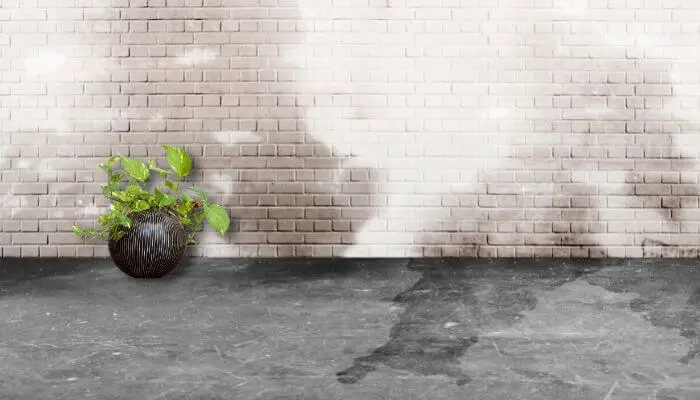
Below are 8 methods you can use to remove moisture from your basement without a dehumidifier.
1. Plants:
Do you experience headaches whenever you go to your basement? Chances are, your basement has high humidity.
Believe it or not, some indoor plants can act as natural dehumidifiers and improve basement air quality.
These plants absorb excessive moisture in the surroundings through their leaves and release it back through transpiration resulting in better air quality.
So what kind of plants can you have as dehumidifiers? Choose plants with high surface area and those with waxy or hairy leaves.
Here are some plants you can choose from:
Golden Pothos
The Golden Pothos is a tropical climbing vine with glossy and thick heart-shaped leaves. It’s an ideal plant for the basement as it’s easy to grow and only needs minimal care.
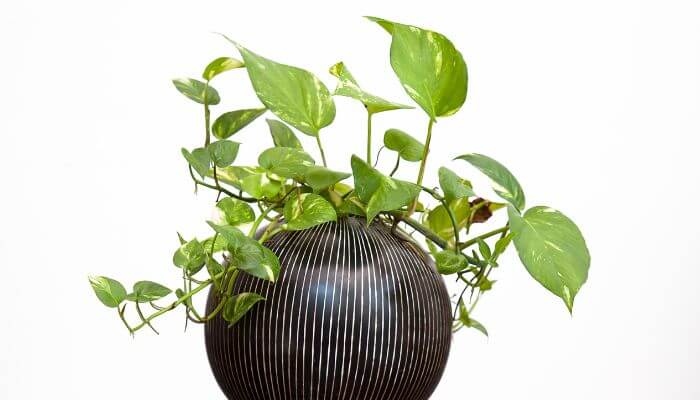
Place this plant hanging or in the corner of your basement and observe how it helps eliminate your basement’s mustiness.
Peace Lily
Peace Lilies are another indoor plant that promotes good air quality and helps absorb water from the air.

It has glossy green leaves and thrives in low-light areas; even fluorescent light would suffice.
Peperomia
An attractive plant choice to grow in your basement is Peperomia. It’s a small, fleshy, and tropical plant that thrives in places with moderate to high humidity.
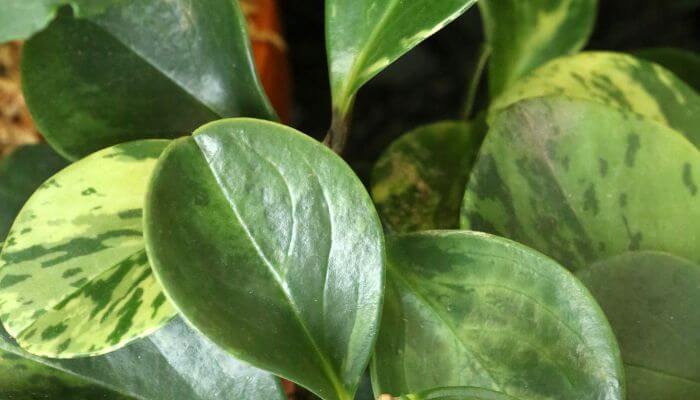
It’s also one of the best indoor plants that control humidity without needing constant tending.
Aloe Vera
Another plant you can use in your basement as a natural dehumidifier is aloe vera. This unique-looking succulent offers several benefits, and one is its ability to absorb indoor moisture.

Put your aloe vera in the desired place in your basement, and don’t forget to water it every few weeks.
2. Open The Windows
One low-cost way to dry your basement without a dehumidifier is by opening the windows.
Whenever you’re down there, don’t forget to open the windows to increase the ventilation. It allows the musty air to escape and enables fresh air to get in.
You can leave it open for a few hours daily.
3. Use The Best Moisture Absorbers:
Regulating basement moisture shouldn’t cost much! It’s terrific that you can use hygroscopic substances as an alternate solution to this. Discover how these substances work as dehumidifiers in the following steps:
Baking Soda
Baking soda uses are not limited to baking or cooking. This natural moist absorber works well in eliminating dampness in the room that you keep it in.

Here’s how you can use baking soda as a dehumidifier in your basement:
- Fill jars or bowls with baking soda. You can use decorative or plain ones; both work just the same.
- Place these jars or bowls in every nook in the basement.
- Change the baking soda every 3–4 weeks or when you see the need for it.
- You will know that baking soda has absorbed moisture because it solidifies.
Charcoal
Who would’ve thought that charcoal could absorb moisture? Charcoal is effective in dehumidifying spaces like the basement. Plus, it’s highly absorbent and inexpensive.

Check out the steps in making a charcoal dehumidifier.
- Get a large, clean can with a lid to place your charcoal or charcoal briquettes.
- Put holes in the side and lid of the can.
- Leave the charcoal in your basement.
- Place more than one of these strategically set up around your basement for better moisture absorption.
- Remember to replace your charcoal after a few months.
Silica
Remember those small packages of silica gel you find in shoe boxes whenever you shop for a pair? These silica gels can effectively absorb moisture.
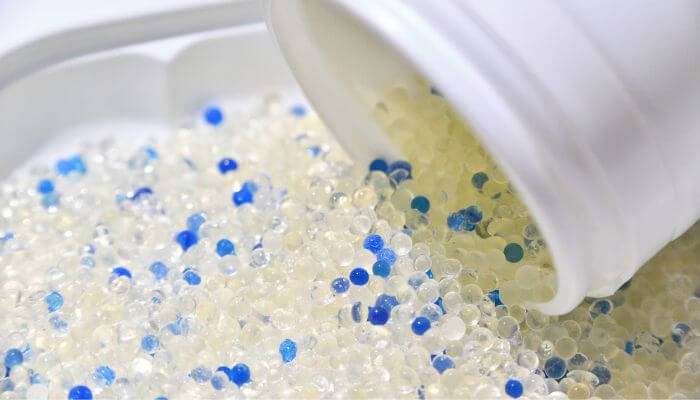
Make a silica gel dehumidifier by following these :
- Get a jar with a secure lid.
- Use a sharp tool to create punctures on the cover.
- Place the silica gel inside the jar and cover it with the lid.
- Leave your jar of silica gel in a strategic place where it can absorb a lot of moisture.
- Remember to replace the silica gel after a few weeks.
Note: Silica gel can be dangerous to kids and pets, so make sure it’s out of their reach.
Rock Salt
Rock salt is the most effective natural moisture absorber. What’s great about it is that it’s safe and accessible. You will need more than a spoonful of this to eliminate your basement’s dampness.
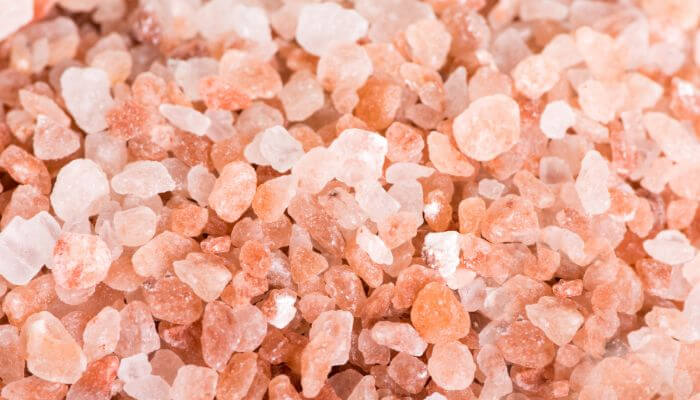
Dehumidify your basement with salt through this easy procedure:
- Purchase a fifty-pound bag of rock salt.
- Prepare two 5-gallon buckets.
- Put several holes in the side and bottom of one bucket.
- Put the bucket with holes inside the one that doesn’t have holes.
- The bucket with no holes will collect the water, which will form from all the moisture absorbed later.
- Fill the top bucket with rock salt to the brim.
- Leave the bucket in your basement.
- Over time, you’ll observe that water will start to drip from the bucket with holes to the one below.
- Remember to refill the top bucket with salt and empty the bottom bucket as it fills with water.
4. Avoid Drying Clothes in the Basement
Drying your clothes in the basement is not a good idea!
The lack of airflow and sunlight will make the excess water from your clothes contribute to the mustiness and moisture-related problems in your basement.
5. Avoid Running Hot Water
Running hot water in the basement will cause the humidity level in the limited space to increase. Remember that the basement doesn’t allow much air circulation.
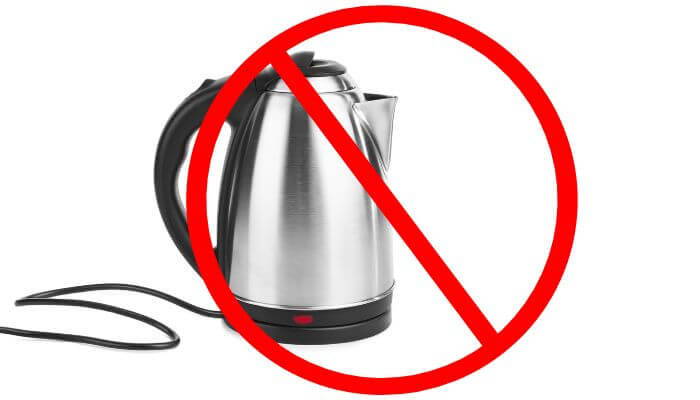
As a result, it can make your basement even damper, which you don’t want to happen.
6. Avoid Boiling Water
Boiling water in the basement is not advisable because the steam from the water will increase the room’s humidity. It’s the same logic as running hot water in a small space that doesn’t have much ventilation.
The moisture from the boiling water will dampen the walls and windows, making matters worse!
7. Use Fans
We also recommend installing fans to improve your basement’s ventilation.
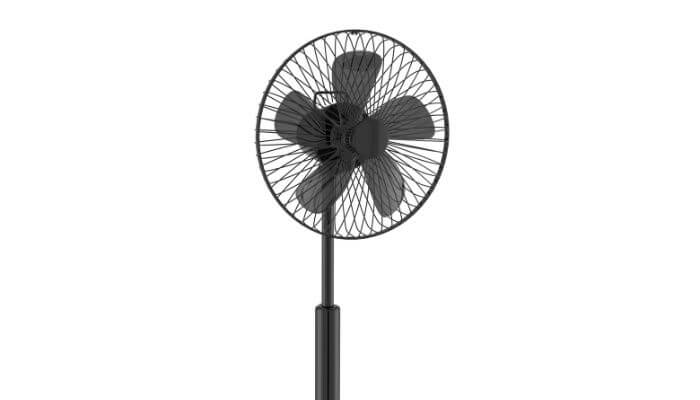
Exhaust fans are great at driving out moldy air and allowing fresh air to enter. They make the air in your basement drier and create a better atmosphere.
If you can’t afford to have an exhaust fan installed, you can buy those portable fans to help solve your moisture problems.
8. Use Air Conditioning
You might wonder why you need to use air conditioning in the basement when it’s already cool there. It’s because cool air will bring less moisture than hot air.
If you turn on your air conditioner longer, it can help manage the humidity levels in your basement.

